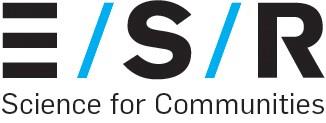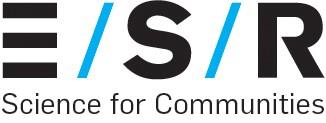

27 January 2022
Helen Wallis
By email: [FYI request #18108 email]
Dear Helen
Official Information Act Request Nucleic acid being test by PCR test
On 5 January 2022 you sent a request for information under the Official Information Act 1982
to the Ministry of Health, who partially transferred your request to ESR on 20 January 2022.
The partial request transferred to ESR were as follows:
Please provide the complete section(s) of RNA code which is detected by the RT-PCR test
for Covid-19 and somehow identify the areas where the differences occur between the
variants.
Please provide the different sections of code (under those which are tested) for each of the 3
main variants of concern, alpha, delta and omicron.
Please provide a full disclosure explanation of how a positive NAAT RT-PCR test shows a
positive case of Covid-19 after detecting a nominal amount of nucleic acid which belong to a
virus rather than showing that the person is indeed infected with a replicating virus.
Please also provide a full disclosure explanation of how an asymptomatic case has been
deemed to be infectious. Quoting a RT-PCR test here is insufficient as it only shows that
genetic material form the searched for nucleic acid is present, not that there is any further
infection. As confirmed by CDC, Dr Fauci, and others the NAAT doesn't prove that the tested
person is infectious only that they carry the genetic material that was tested for by the NAAT.
Our response to your request:
Please provide the complete section(s) of RNA code which is detected by the RT-PCR
test for Covid-19 and somehow identify the areas where the differences occur
between the variants.
There are at least 18 different SARS-CoV-2 nucleic acid tests (NATs), which include RT-
PCR, being used in New Zealand. Almost all of them are commercial NAT assays which
mean that it is not publicly known what the sequence of the primers and probes (sections of
code) are and therefore it is not possible to provide you with this information.
The U.S Food & Drug Administration (FDA) informs everyone when assays which they have
granted Emergency Use Authorisation have an issue with detecting any SARS-COV-2
variant.
(https://www.fda.gov/medical-devices/coronavirus-covid-19-and-medical-
devices/sars-cov-2-viral-mutations-impact-covid-19-tests ).
Additionally, commercial companies in New Zealand inform the users of their assays should
there be any issue with their respective assays.

 Please provide the different sections of code (under those which are tested) for each
Please provide the different sections of code (under those which are tested) for each
of the 3 main variants of concern, alpha, delta and omicron.
The NAT assays in use in New Zealand amplify and detect different sections of code in the
following viral genes: N, E, RdRP, ORF and S - gene. The only assay in use in New Zealand
which has one of the gene targets (S-gene) affected by both the Alpha and Omicron variant
is the Thermo Taqpath assay.
The S-gene product cannot be amplified/detected due to an amino acid deletion at position
69 and 70 in the S-gene. However, the other 2 gene targets (N and ORF) are still detected.
Subsequently it is referred to as S-gene target failure (SGTF) or S-gene dropout.
This doesn't cause any false negatives as the other two genes are still detected, but it can
be an indication that the virus detected may be the Alpha or Omicron variant of concern.
Please provide a full disclosure explanation of how a positive NAAT RT-PCR test
shows a positive case of Covid-19 after detecting a nominal amount of nucleic acid
which belong to a virus rather than showing that the person is indeed infected with a
replicating virus.
A positive NAT cannot determine if it comes from a replicating virus or not as it detects only
a piece (small amplicon) or pieces of the virus. However, if the NAT signal increases on
repeat testing then one can assume that more virions are produced (viruses are replicating).
Positive cultures are more indicative of replication competent virus in clinical samples.
Please also provide a full disclosure explanation of how an asymptomatic case has
been deemed to be infectious. Quoting a RT-PCR test here is insufficient as it only
shows that genetic material form the searched for nucleic acid is present, not that
there is any further infection. As confirmed by CDC, Dr Fauci and others the NAAT
doesn't prove that the tested person is infectious only that they carry the genetic
material that was tested for by the NAAT.
Epidemiological follow up studies have shown that those who are exposed to asymptomatic
cases, say for instance in a household setting, have a high probability of testing NAT SARS-
CoV-2 positive or develop COVID-19 (clinical syndrome) in the follow up incubation period. It
can be difficult to determine if all asymptomatic cases are infectious when the NAT signal is
weak, especially where someone has not had a known exposure or where they don't
develop symptoms during their isolation period.
This is because the NAT signal can be detected, usually at a high Ct value, for a much
longer period than the first 10 -14 days where it is thought someone is infectious.
Infectiousness is highest when the NAT signal is the strongest (low Ct) which is typically 2
days before until the first couple of days after symptom onset.
As stated before, it is much harder defining the infectious period in an asymptomatic
individual but to err on the side of caution the advice is to isolate for the same amount of
time as for a symptomatic individual.


 Your right to seek a review
Your right to seek a review
You have the right to seek an investigation and review by the Ombudsman of this decision.
Information about how to make a complaint is available at www.ombudsman.parliament.nz
or freephone 0800 802 602.
Thank you for your request.
Yours sincerely
Jill Vintiner
Joint General Manager Health and Environment - Health ESR






